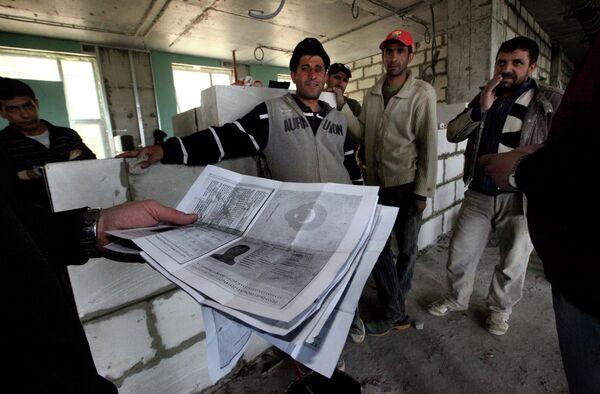MOSCOW, August 1 (RIA Novosti) – Most Russians have negative views regarding the influx of labor migrants, millions of whom come from former Soviet republics in Central Asia to seek a better living in Russia, according to the results of a state survey published Thursday.
About two-thirds (65 percent) of respondents to the poll, conducted last month, said migrants increase crime rates, while 40 percent said migrants are not good for the economy.
Only 16 percent of respondents said migration has a positive effect on the economy, and just 8 percent said migrants do not increase crime rates.
The migrant-worker issue has become a focal point in the run-up to Moscow’s mayoral election, with candidates calling for tougher regulations regarding migrants, many of whom are allowed to enter Russia without a visa.
This week, Moscow police detained more than a thousand people during a sweep “decriminalization” of marketplaces around the city, areas where many migrants work and/or buy food and other light consumer items.
Of the 5 million migrant workers in Russia, 3 million are illegal, the Federal Migration Service said in March.
According to last month’s survey, conducted by the state-run Russian Public Opinion Research Center (VTsIOM), some 56 percent of Russians believe that migrants “create competition on the labor market and occupy jobs of local residents.”
Nearly half of respondents (47 percent) said migrant labor compensates for workforce shortages in low-skilled and low-paid jobs. Forty-five percent voiced doubts that migrants make Russia more open to new ideas and cultures.
Fifty-three percent don’t think that immigration is a solution to the country’s demographic problems, with that sentiment showing an increase from 46 percent in 2005.
Some 58 percent said they support the idea of bringing in more Russian-speaking people from abroad and stricter limits on the inflow of “other nationalities.”
Over the past seven years, Russians have become more negative toward migrant workers in a range of sectors: local government (from 71 in 2005 to 86 percent this year), law enforcement (68 to 84 percent), education (63 percent to 81), healthcare (61 percent to 76 percent), public catering (54 percent to 70 percent) and public transport (53 percent to 68 percent).
The survey covered some 1,600 people in 130 places around the country. The statistical margin of error did not exceed 3.4 percent.


